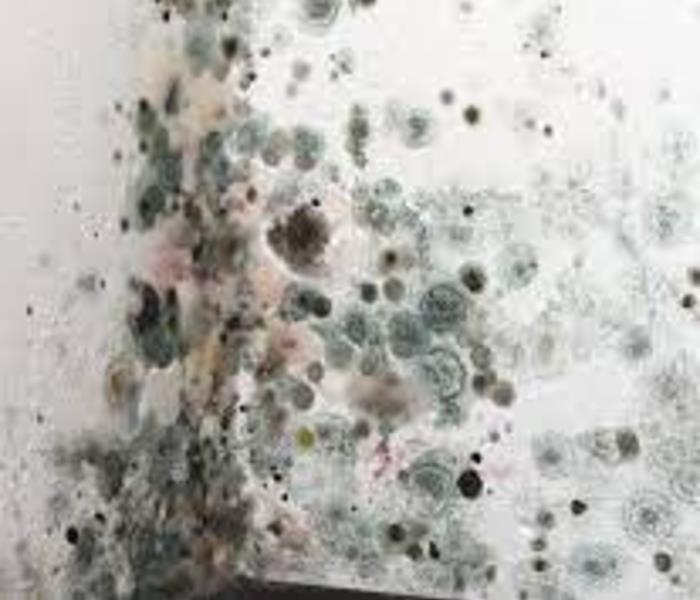What are the Different Types of Mold?
9/1/2022 (Permalink)
You might assume that all mold is the same. But mold, like all life forms, is incredibly diverse and comes in many different shapes and colors. Like birds, bugs, fish, and mammals, there is a diverse range of life in the mold family tree.
Here are a few types that are a particular concern for homeowners.
Stachybotrys
This type of mold grows extremely well on wood, hay, paper, and cardboard. This is the type that is commonly called “black mold” or “toxic mold” although these are unofficial terms that are often used to describe different molds. Stachybotrys mold usually requires extremely damp conditions with days or even weeks to fully grow.
Toxic molds, also known as mycotoxins, can also be found in office buildings. We see this in offices with poor ventilation and indoor water source like a fountain. While water indoors may look pretty, if there is not proper ventilation as well as temperature and humidity control, it can be a breeding ground for black toxic mold.
Aspergillus
Aspergillus mold is one of the most common forms of household mold. It has 185 different sub-species with 22 sub-species known to cause illness.
Cladosporium
This is also a common form of mold that has a pretty ugly reputation. Cladosporium a genus of fungi including some of the most common indoor and outdoor molds. Species produce olive-green to brown or black colonies, and have dark-pigmented conidia that are formed in simple or branching chains. Many species of Cladosporium are commonly found on living and dead plant material.
Mucor
This type of mold is actually common in soils, but it can work its way into homes. Mucor mold is often found in duct work and inside air conditioning systems. It grows fast, has a whitish or grey color, and can grow quite thick.
Penicillium Mold
Anyone who’s studied medicine knows that penicillin is commonly used as an antibiotic against various types of infections. It can grow on walls and many types of food, and it’s actually used quite often in food processing.
Acremonium
Acremonium is a group of molds that can frequently be found indoors and several of its species are known human pathogens.Fusarium
This is another common soil mold that usually affects humidifiers and plants. It can produce toxins that could be harmful to circulatory and nervous systems. If this mold does affect someone, it’s usually through ingestion (such as eating contaminated grains), but it is not unheard of for people to inhale the spores.





 24/7 Emergency Service
24/7 Emergency Service
